can we call you MR ELM?Of course I'm just guessin', but likely that "spiral grain" elm is just another variant of the Siberian Elm.
At one time, before it proved to be invasive, the Siberian Elm was thought to possibly be the "replacement" for the American Elm that was being devastated by DED. Dozens of cultivators were developed and tested... it was crossed with all sorts of elms, both domestic and imported. Many of those cultivators "went wild", and "in the wild" the Siberian Elm naturally breeds the engineered genes out... eventually becoming plain ol' Siberian Elm again. The thing is, many of those original cultivators are still living, planted in shelter belts, farmyards, and even along city streets of the Midwest and plains... and they're still makin' seeds and escaping into "the wild".
The worst thing about the Siberian Elm (we now know) is that it naturally hybridizes "in the wild" with the Slippery (Red) Elm, and eventually breeds the Slippery elm out of existence. There are areas of the Midwest and plains where the Slippery Elm is all but extinct because of the double hit... the double hit of DED and Siberian Elm. That's one of the reasons the Siberian Elm was thought to be a replacement for the American Elm... both the Slippery and Siberian Elms showed a certain amount of resistance to DED, and the two were easily hybridized. Where we went wrong was, it wasn't so much that the trees were resistant... it was more that DED had a preference for American Elm. Once the American Elm was all but gone, DED simply morphed itself into something with a preference for Slippery Elms, Siberian Elms, and the hybrids. The lone holdout is the Rock Elm... but its time is coming.
I have several very large American Elms, and a few big Slippery Elms in my woodlot that have survived several onslaughts of DED. But each time DED makes another pass it gets more of them... the disease morphs as needed to stay alive. Smaller trees spring up from the larger "resistant" trees, only to be wiped out during the next pass from DED. My woodlot will go three, four, maybe five years without a sign... and then suddenly dozens will die in just a couple years. The cycle repeats itself over and over. Some of the young trees will survive a couple passes, but I have virtually no elms between the 8-10 inch diameter and the 24-30+ inch diameter... they just don't make it long enough to get bigger than 10 inches, and the last of the bigger ones will soon be gone.
The whole mess is a sad state of affairs...
*
You are using an out of date browser. It may not display this or other websites correctly.
You should upgrade or use an alternative browser.
You should upgrade or use an alternative browser.
Chinese Elm or ?
- Thread starter Wood Doctor
- Start date

Help Support Arborist Forum:
This site may earn a commission from merchant affiliate
links, including eBay, Amazon, and others.
brewmonster
ArboristSite Operative
Wood Doctor said:
(1) They weigh less than one-fourth as much.
For something that just lies on the ground, what does it matter? This is in the context of working with rounds that you say weigh 500#, right?
(2) You can hang them on a pegboard wall.
Why would I want to take up valuable space in my shop with such stuff?
(3) They can be easily carried in the truck along with your tools.
Why again? Your pic shows any number of rounds that could be split and used for this purpose.
(4) It's easier to roll the big round up the inclined plane.
I wouldn't try to roll them up anything. In fact, I wouldn't even bother with the half-rounds I mentioned earlier. Just stand 'em up and noodle most of the way through, then roll the sucker over and finish the job without a "stand" of any kind.
(5) Less messy.
We're talking about processing firewood here, aren't we? How dainty do we need to be? Extended pinkies and lace doilies?
(6) Don't have to run around looking for logs in the woods or at the drop site
See response #3 and 4.
(7) etc. etc.
Blah, blah.
But shucks, if you want to remain a Neanderthal, be my guest.
I may be a Neanderthal, but at least I know what a Chinese Elm is.
Look, if it makes you feel good to build and use those things, by all means do so. What you ought to reconsider, though, is the gratuitous name-calling. There's just no need.
(1) They weigh less than one-fourth as much.
For something that just lies on the ground, what does it matter? This is in the context of working with rounds that you say weigh 500#, right?
(2) You can hang them on a pegboard wall.
Why would I want to take up valuable space in my shop with such stuff?
(3) They can be easily carried in the truck along with your tools.
Why again? Your pic shows any number of rounds that could be split and used for this purpose.
(4) It's easier to roll the big round up the inclined plane.
I wouldn't try to roll them up anything. In fact, I wouldn't even bother with the half-rounds I mentioned earlier. Just stand 'em up and noodle most of the way through, then roll the sucker over and finish the job without a "stand" of any kind.
(5) Less messy.
We're talking about processing firewood here, aren't we? How dainty do we need to be? Extended pinkies and lace doilies?
(6) Don't have to run around looking for logs in the woods or at the drop site
See response #3 and 4.
(7) etc. etc.
Blah, blah.
But shucks, if you want to remain a Neanderthal, be my guest.
I may be a Neanderthal, but at least I know what a Chinese Elm is.
Look, if it makes you feel good to build and use those things, by all means do so. What you ought to reconsider, though, is the gratuitous name-calling. There's just no need.
Last edited:
1project2many
ArboristSite Guru
Ahhhhh.... I love these threads when people agree with my "know-it-all" opinions... sweet friggin' vindication.
Haha! That's only because you decided I might be right about CE as a decent firewood.
Fact is, if you hadn't been so damn stubborn about what is and what isn't American Elm, I wouldn't have put as much effort into learning to ID it properly the first time. I'd never even heard of Siberian Elm until I mis-identified it on AS.
As promised, pictures of Siberian and Chinese Elm. Also, Chinese Elm branches have many sudden turns and forks. When cutting branches to length, most are not straight enough to split or stack nicely. The trunk can have some nice straight sections but I've never seen a trunk more than about 25 feet tall around here. Maybe it would grow taller with competition but in this area, they're usually planted as ornamentals.
Chinese:
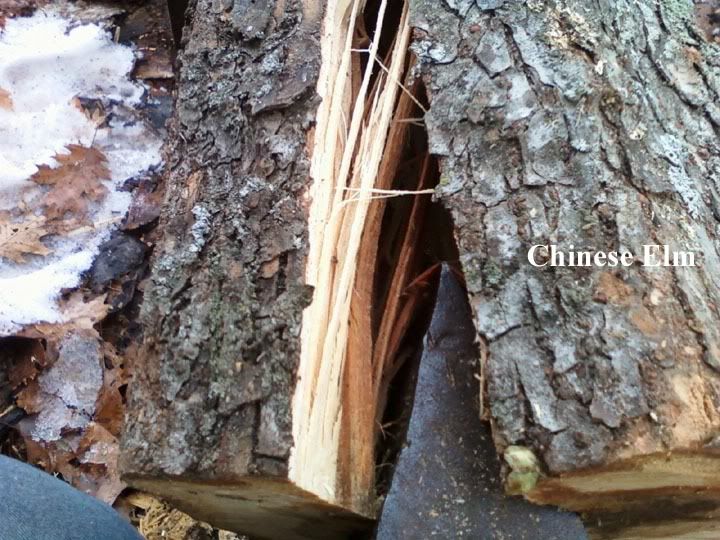
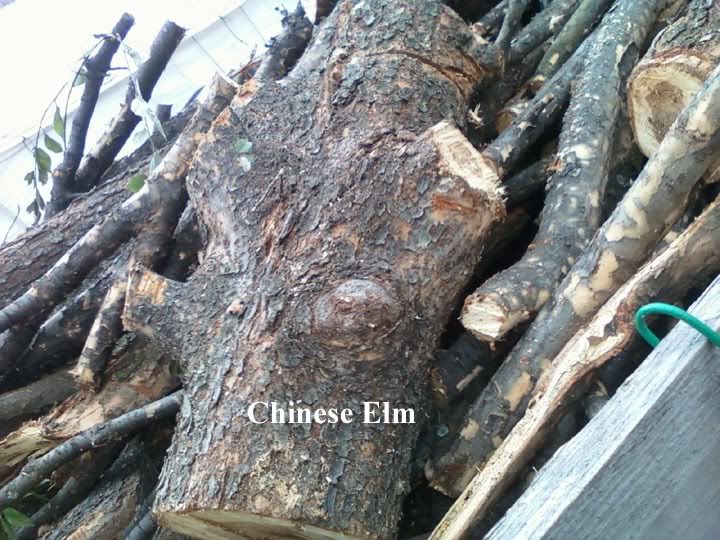
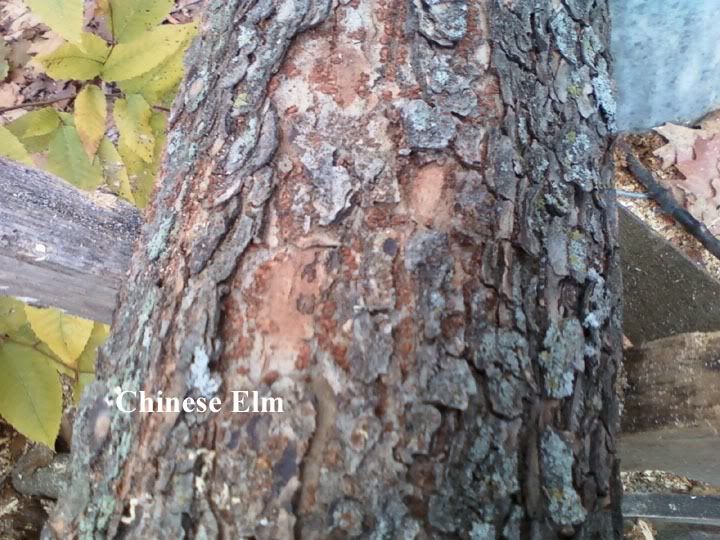
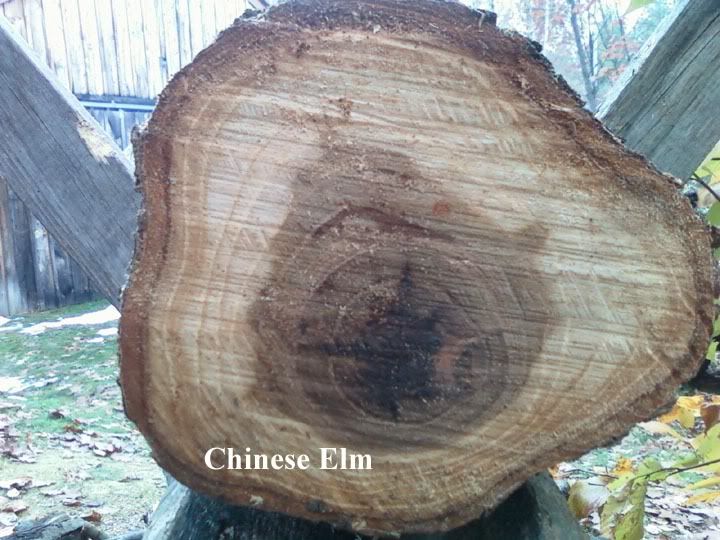
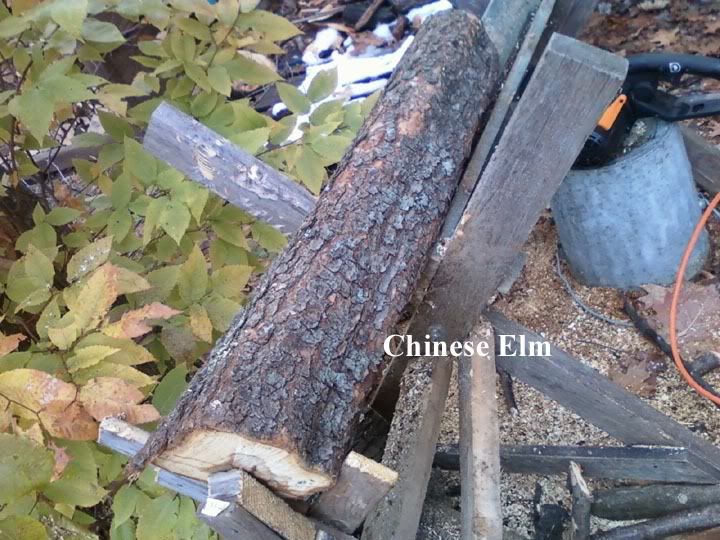
Siberian
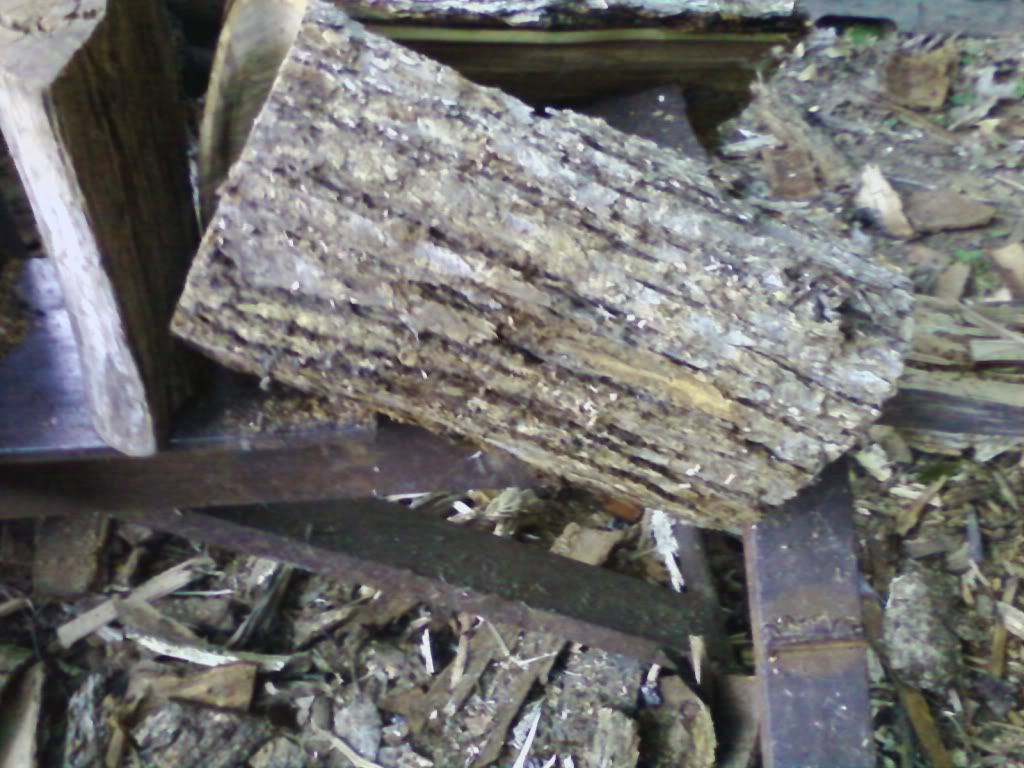
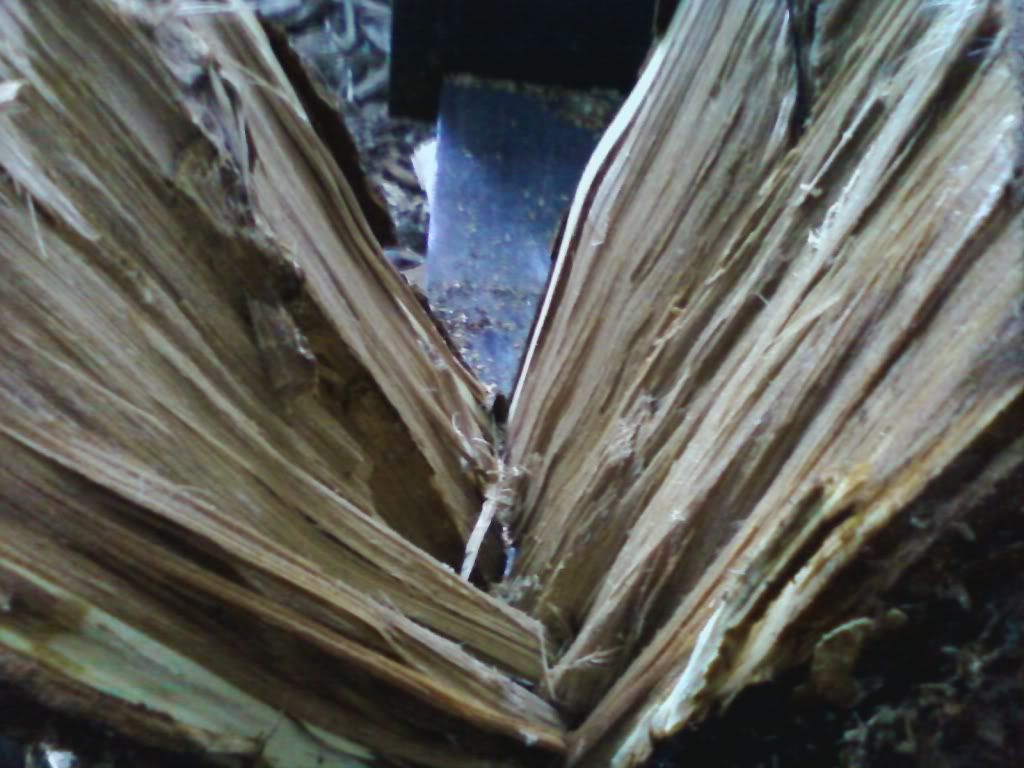
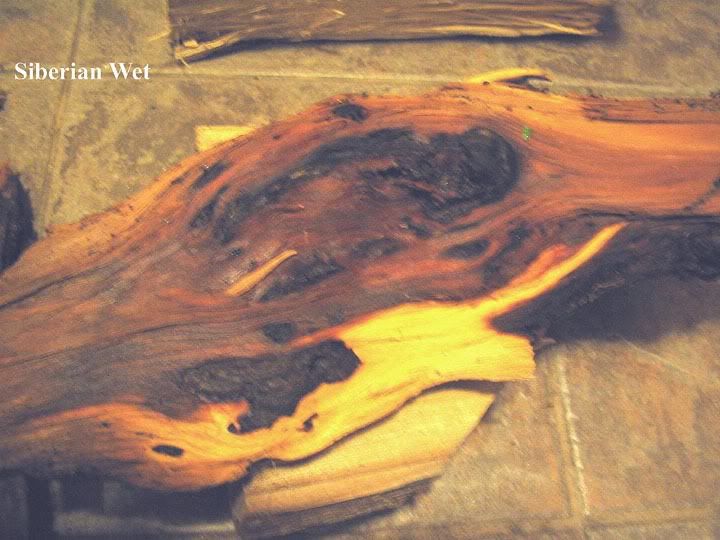
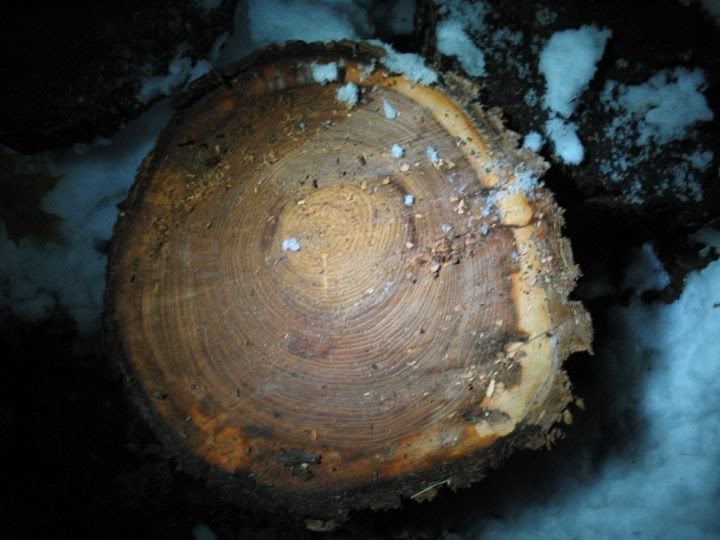
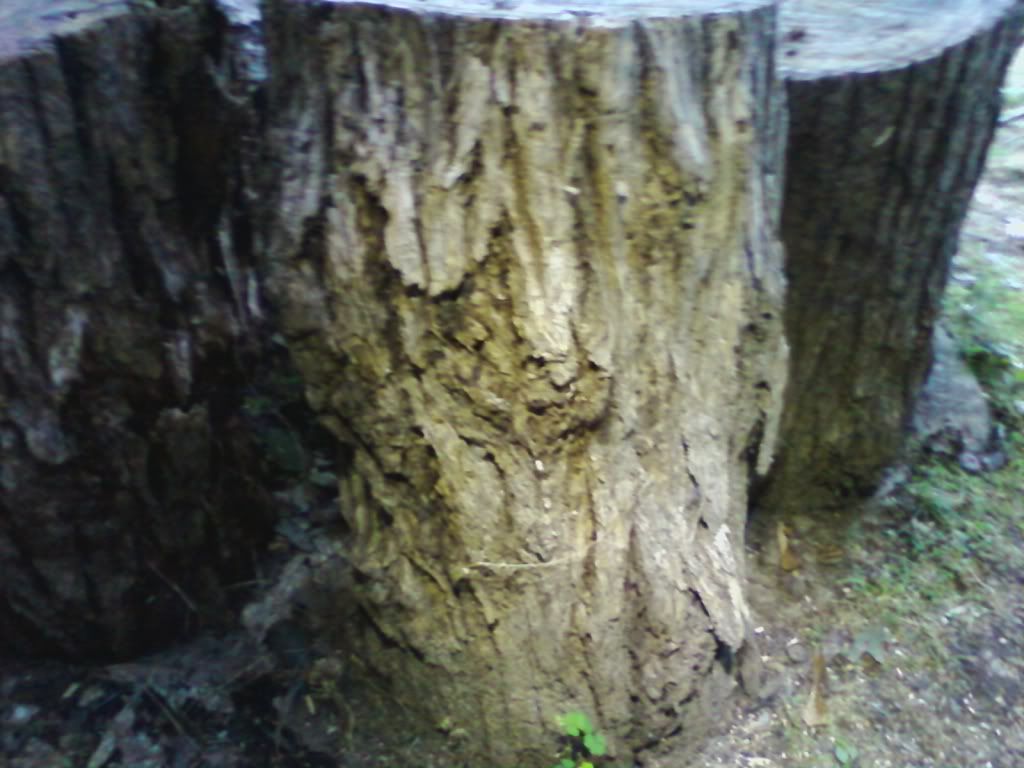
Last edited:
@1project2many
If there was a way to double-like your post... I'd do it‼
@bayard
Mr Elm?? Heck man, this is the internet... you can call me anything you like, even azzhole if it strikes your fancy.
After all... what am I gonna' do about it?? L-O-L
*
If there was a way to double-like your post... I'd do it‼
@bayard
Mr Elm?? Heck man, this is the internet... you can call me anything you like, even azzhole if it strikes your fancy.
After all... what am I gonna' do about it?? L-O-L
*
Brewmonster, I do not recall calling anyone any names. I never have. I simply offered an option to get things done a bit easier. Let's drop it. Good luck with half round log supports for noodling big logs that can easily be found out in the woods, especially on really cold days with snow on the ground.
Or... you could just do it the way I do and have no need for half-round logs or metal stands. 
Just noodle all your large rounds ¼ or so, set a wedge, and smack it hard with the blunt side of your maul, then bust the halves into quarters with the sharp side of your maul, pick up the wedge and move to the next round.
Of course... if you've tossed your maul because you think the Fiskars is the best thing since sliced bread... well... you'll need those half-rounds or stands.
Just noodle all your large rounds ¼ or so, set a wedge, and smack it hard with the blunt side of your maul, then bust the halves into quarters with the sharp side of your maul, pick up the wedge and move to the next round.
Of course... if you've tossed your maul because you think the Fiskars is the best thing since sliced bread... well... you'll need those half-rounds or stands.
mn woodcutter
ArboristSite Guru
spider, what kind of maul do you use?
spider, what kind of maul do you use?
Heck, I've had it so long I don't remember where, when or how I came to own it... any stamping or printing that may have been on it is long gone.
Knowing me... always looking to save a buck... I likely picked it up for pocket change at flea market, farm sale or some such .
I've lost count how many times I've rehung the head on a new handle... maybe a half dozen times??
All I can tell you is it weighs right close to 8 pounds, hangs on the end of a 36 inch hickory handle, and the steel will take an edge you can shave with.
*
White Spider must be all muscle. I wish I still had that kind of strength.spider, what kind of maul do you use?
Anyway. I'll eventually post a thread showing these big round supports, primarily because they worked for me. In the mean time, Merry Christmas to all.
L-O-LWhite Spider must be all muscle.
Hardly... two weeks away from 56 years old, 5'9" tall, and 215 pounds... I'm an old, fat man... LOL
I'm not anything near "all muscle"... but there's a solid substructure. The back, shoulders and arms are still capable... endurance gets a bit more questionable every year. The work I do (involving some climbing) keeps things somewhat "toned"... yeah, I'm in better shape than many my age, but I ain't able to stay step-for-punch with a young man. I also drink and smoke way too much... but I've always worked hard and played hard... the day is comin' when it all catches-up. I figure workin' and playin' hard keeps me young... and so does havin' a 5-year-old son‼
Heck, I married a women 10 years younger than me to keep the blood pumpin' where it needs to be... LOL
*
Bushmans
Smoke Dragon Herder
I fabricated a big steel wedge at work just for splitting the 1/4 noodled rounds as Spidey suggested. Gas is expensive around here and I don't want to waste a drop more than I have to. It really doesn't take much if you have the right wedge stuck in the kerf. Although sometimes I noodle all the way through when I'm making bedding for the chickens. I've been burning the Siberian that died in the back yard last year. It stinks! I don't like it at all but have about 30 more small trees that need to be cut. Just gonna mix it in with the ash and maple I guess.
haveawoody
Addicted to ArboristSite
Bushmans
Smoke Dragon Herder
As long as I burn it almost full blast it's not bad but there is only one thing I do fast!
haveawoody
Addicted to ArboristSite
brushbandit
ArboristSite Member
What you're describing ain't Chinese Elm... but it could easily be Siberian Elm.
The two are not the same... the Siberian Elm is often called Chinese Elm by people who don't know any better.
When I moved into the place I'm livin' now it had a huge Siberian Elm in the front yard, it stood close to 70 feet tall with a trunk diameter something over 3 feet.
When I took that monster down my son counted 93 rings in the stump.
On its native range they can live up to 150 years.
Oh... and the moisture content of "green" Siberian Elm is around 110-115%... meaning, if one of those rounds weighs 500 pounds green, you'll get something in the neighborhood of 230-250 pounds of seasoned (15-20% moisture) wood from it. Likely even less when you factor in the bark.
I sure hope you have a good, stout hydraulic spliter... 'cause you're gonna' need it...
93 years on a 36 " Siberian Elm is a little out there. They grow like weeds. The rounds posted in the pictures in this thread have growth rings so big you can count them from the pictures. That tree is probably barely 50 years years old. I don't see many going 150 years either. Fast growing weak wooded junk tree. These trees are one step above an ailanthus.
93 years on a 36 " Siberian Elm is a little out there. They grow like weeds. The rounds posted in the pictures in this thread have growth rings so big you can count them from the pictures. That tree is probably barely 50 years years old. I don't see many going 150 years either. Fast growing weak wooded junk tree. These trees are one step above an ailanthus.
I hate to see what you think of cottonwood. Here where I am we burn what we get for free and all free wood is good to burn for me when there is nothing else.
Here is a cottonwood that grows around here:I hate to see what you think of cottonwood. Here where I am we burn what we get for free and all free wood is good to burn for me when there is nothing else.
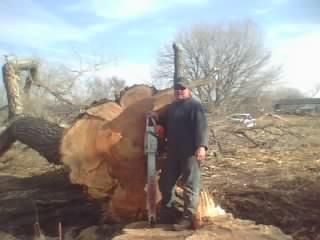
The sawyer is just under 6' tall. He used an MS660 to drop her. I have no complaints about burning cottonwood to heat my cabin or house when it's cold outside.
93 years on a 36 " Siberian Elm is a little out there. They grow like weeds. The rounds posted in the pictures in this thread have growth rings so big you can count them from the pictures.
I agree... 93 years on a 36 inch Siberian Elm would be "out there."
But I believe what I said was, "trunk diameter something over 3 feet."
Heck, that was 20 years ago, I didn't measure it, I'm just goin' off memory and I know it was over 3 feet... it may have been over 4 feet, but I know it was over 3 feet because the boy used a yardstick to mark his count.
*
The outer 30 growth rings on the tree that I posted here were less than 1/16" apart. This baby grew fast in the first 40 years and then slowed down to a crawl. The owner wanted it cut down but you have to wonder how long it would have lasted on its own.
Similar threads
- Replies
- 26
- Views
- 4K
- Replies
- 27
- Views
- 3K
- Replies
- 42
- Views
- 7K
Latest posts
-
-
-
Scrounging Firewood (and other stuff)
- Latest: Squareground3691
-
-
OLD husqvarna rancher 50 not starting - seems to have spark, compression, fuel, timing?
- Latest: Vintage Engine Repairs
-
-
-



